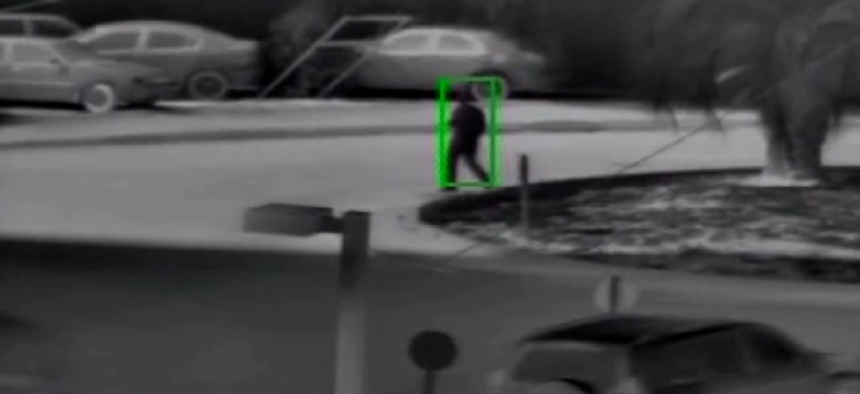Small biz, Sandia team on video content analytics

The team developed technology that puts a colored box around the suspicious pixels in the video, focusing the operator’s attention and weeding out extraneous video.
False positives are the downside to any security system. In video surveillance, whether alarms are triggered by legitimate workers or a floating plastic bag, they cost time and money to investigate.
So when Dave Meurer’s Albuquerque-based security company Armed Response was looking for an outdoor video monitoring system that could identify intruders, it wanted one that was better able to distinguish a burglar from a bicycle. Meurer believed that if his company could get a handle on the problem it would give it a serious competitive advantage.
So Meurer and Armed Response turned to the New Mexico Small Business Assistance (NMSBA) program that matches companies in need of technical help with engineers and scientists from Sandia and Los Alamos national laboratories.
And NMSBA turned to Sandia.
"We got word that NMSBA was looking for somebody who knew about video analytics for security. I had been testing those systems for the government for years," Sandia engineer Dave Furgal said in a Sandia news release. "I said to NMSBA, 'You found the one person at Sandia who probably knows the most about that technology.' We knew what worked and how it worked."
Meurer and Furgal began working on an outdoor security system that could tell the difference between a human trying to breach a perimeter and a tree waving in the wind. Furgal knew exactly the kind of video content analtyics Armed Response needed.
"It begins with a computer connected to the camera looking at changes in pixels in successive frames of video. The algorithms identify a group of pixels moving in the same direction with purpose, as opposed to a tree that moves back and forth," Furgal said.
The program the pair designed puts a colored box around pixels identifying movement and sends it to a central alarm station where an operator can look at the video and identify the object.
"Does it look like a human? Does it look like a vehicle?" Furgal asked. "The operator doesn't have to watch a mind-numbing surveillance camera live feed to detect an intruder. The colored box focuses the operator's attention on where to look in the video scene and weeds out extraneous video that doesn't matter.”
Once developed, Sandia researchers tried to induce false positives using weather, birds, plastic grocery bags and other objects.
“You have to collect data on the performance of each system and observe those behaviors for many months to collect detection and false alarm statistics,” Furgal said. “A small business doesn’t have the time and resources to do that.”
As a result of the collaboration, Armed Response more than tripled its staff and clientele over five years and now uses its video analytics system at over 75 sites. Armed Response and Furgal are still working on video and physical security technology.
"Every time without fail Dave has contributed to our ability to more effectively serve our clients and expand our customer base," Meurer said. "We developed a whole new market niche and a unique competitive position."





